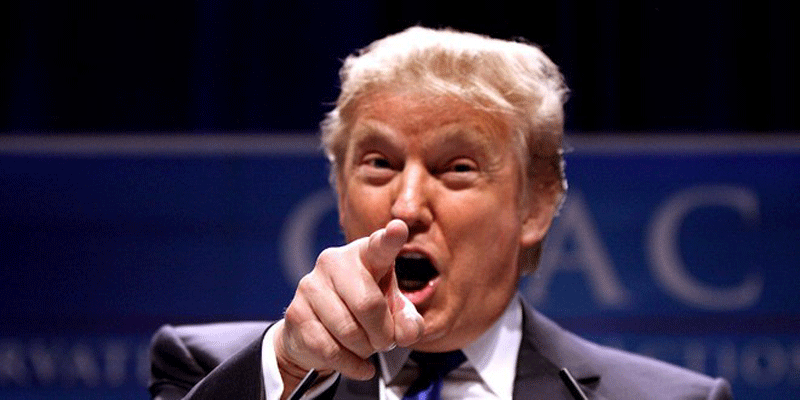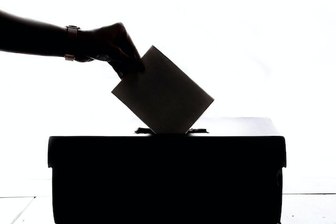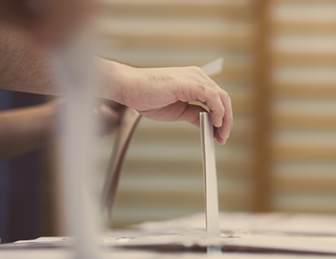Donald Trump has never made any bones about changing his mind and this week he has performed perhaps the most remarkable U-turn yet. Having campaigned passionately during last year’s election against America’s military involvement in Afghanistan and promising to bring American troops home, he announced on Tuesday that they were to stay indefinitely and there were to be more of them. He said Nato should do the same. Should Britain agree?
The war the United States has been fighting in Afghanistan is the longest it has ever fought. President George W Bush launched it, with British and other backing, back in 2001 after the al-Qaeda terrorist attacks of 9/11 that claimed 3,000 American victims in New York and Washington. The Taliban regime then running Afghanistan had harboured Osama bin Laden’s al-Qaeda Islamist group responsible for the 9/11 attack so the American invasion of the country was justified as both a reprisal and as a means of ridding the country of both al-Qaeda and the Taliban government.
That task was relatively easily accomplished but turning Afghanistan into a peaceful country that would not provide a safe haven for Islamist terrorists in future was not. About a hundred thousand have been killed in the sixteen years the war has dragged on. Over 2,300 American military personnel and 453 British troops were killed. The war is estimated to have cost the American government about $700 billion; the bill is still running at around £3.1bn a month.
Donald Trump was not the first presidential candidate to campaign on withdrawing the American military from the country. Barack Obama promised the same thing too but found things looked very different when he got into the Oval Office. Faced with continuing failure to achieve America’s ends, he ordered a ‘surge’ in 2009. An additional 30,000 troops were sent to the country, making a total of 100,000. That was due to come to an end in 2012 and he aimed for complete military withdrawal by the time he left office in 2016. But there were still 8,400 American troops (out of a total of 13,000 for the coalition as a whole) when his presidency came to an end this January.
When he was running for office Donald Trump was scornful of the entire approach to Afghanistan. He said: ‘We have wasted an enormous amount of blood and treasure in Afghanistan. Let’s get out!’ he said of the American attempt at nation-building in Afghanistan that the US was ‘building roads and schools for people that hate us.’ His determination to cut America’s losses was all of a piece with his nationalist, ‘America First’ belief that saw no role for the United States as either the world’s policeman or as the exporter of democratic western values to countries where they did not exist. He was urged on by his chief strategist, Steve Bannon.
His U-turn has been motivated not by a change of heart on such a fundamental issue but because the deteriorating situation in the country since the sharp reduction in American troops risks turning it into an even safer haven for anti-American Islamic terrorists than it was back in 2001. Despite all the efforts (and money) devoted to backing the elected governments of Afghanistan in the last sixteen years, the current one of President Ghani controls barely 60% of the country. The Taliban have returned to rule around 10% and the rest is contested. Furthermore, so-called Islamic State, or Isis, has gained a foothold in the country. In recent months the capital, Kabul, has been the target of terrorist attacks, claiming hundreds of lives.
So on Tuesday (following last week’s sacking of Mr Bannon) President Trump announced his U-turn. He is expected to send around 4,000 more troops to the country. But he was clear about what their task was and what it was not. He said: ‘We are not nation-building again. We are killing terrorists.’ The purpose of the continuing American military presence (for which, unlike President Obama, he set no end date) is twofold: to continue to train Afghan soldiers so that they can become responsible for the country’s security, and to fight terrorists. He called on his allies in NATO to increase their contributions too.
Opposition to this volte-face was immediate in the United States. The right-wing Breitbart News, to which Steve Bannon returned after his sacking, accused the President of a ‘flip flop’. More potently, Mr Trump’s critics asked for a definition of what success would be. No one, not even the President, imagines that increasing the overall strength of the forces of America and its allies to around 18,000 is going to transform the country when a mighty force of 100,000 had failed to do so. Nor does anyone seriously believe that ‘terrorism’ can be permanently crushed. Indeed some argue that the very presence of foreign troops in a country like Afghanistan serves simply to breed terrorists even when the leader of those troops insists, as President Trump does, that he has no wish to impose western values on the people who live there.
So should America’s NATO allies fall in line with the President’s new policy? The Secretary-General of NATO, Jens Stoltenberg, welcomed the shift in American policy, no doubt in part because it provided an opportunity to give backing to Mr Trump who has previously cast doubt on the value of NATO itself. But it will be up to NATO’s member countries to decide individually what to do.
Britain is due to have 600 military personnel stationed in Afghanistan by November. The question is whether we should send more. There will be great reluctance on the part of the government because of the political sensitivities caused by the chequered history of our military involvement. When Britain committed troops to the initial invasion back in 2001, the then defence secretary, John Reid, mused in an interview with me that it could well turn out that all the troops might come home without a single casualty. In fact 450 were killed and many more injured. And many believe these casualties were suffered for no lasting purpose. Much of the fighting involving British troops took place in Helmand Province, yet the Taliban is once again a strong presence in the area.
On the other hand, the British government may feel it cannot afford to do other than respond to President Trump’s request for assistance. Not only does Britain continue to claim a special relationship with the United States (one manifest especially in its military contribution to NATO and to common defence with the United States), but there’s also Brexit to consider. Theresa May and others appear to believe that we need to cling even closer to America. It may be that the government will attempt to square the circle by providing more aircraft and extra logistical support rather than sending extra troops. What is clear, though, is that President Trump’s U-turn puts Afghanistan right back on Britain’s political agenda.
How do you think Britain should respond?
Let us know your views.
Image PA










